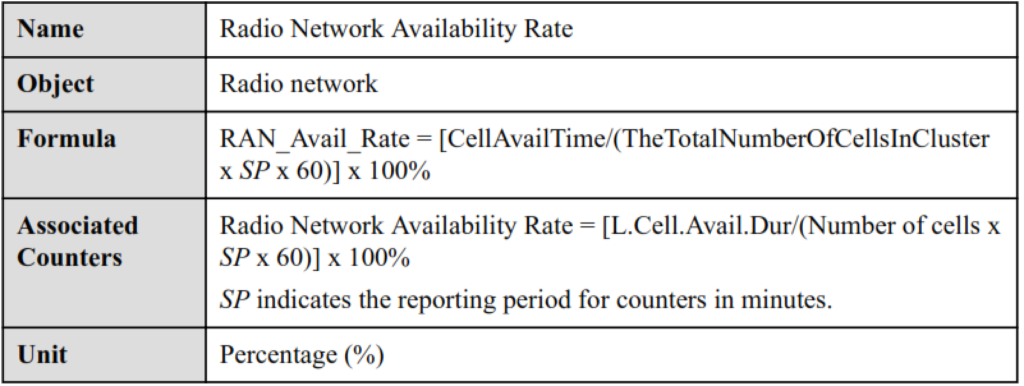This LTE availability KPI indicates the percentage of time when cells in a radio network are available to provide EPS bearer services. It is used to evaluate the operational status of cells during busy hours.
1. Radio Network Availability Rate.
The Radio Network Availability Rate KPI is calculated based on the availability of all cells in the radio network. It reflects the proportion of time that the cells are operational and capable of providing services.
Formula:

Explanation:
- Total available time of all cells: This is the sum of the time durations during which each cell in the network was available and capable of providing services within the reporting period.
- Total time: This is the total duration for which the KPI is being measured, typically the reporting period (e.g., busy hours).
Example Calculation:
Suppose the total available time for all cells in a network over a reporting period of 1440 minutes (1 day) is 1410 minutes, the Radio Network Availability Rate would be calculated as follows:
Radio Network Availability Rate=(1410 minutes/1440 minutes) × 100% ≈ 97.92%
This KPI helps network operators ensure high availability and reliability of the network, enabling them to monitor and improve cell performance during critical periods.
2. LTE Radio Network Unavailability Rate.
This KPI indicates the percentage of time that a cell is unavailable in the radio network. It is used to evaluate the degradation of network performance due to cell unavailability.
Definition: The Radio Network Unavailability Rate is calculated based on the total time that all cells in the radio network (or cluster) are unavailable during the reporting period.

The unit for the reporting period (SP) is minutes.

